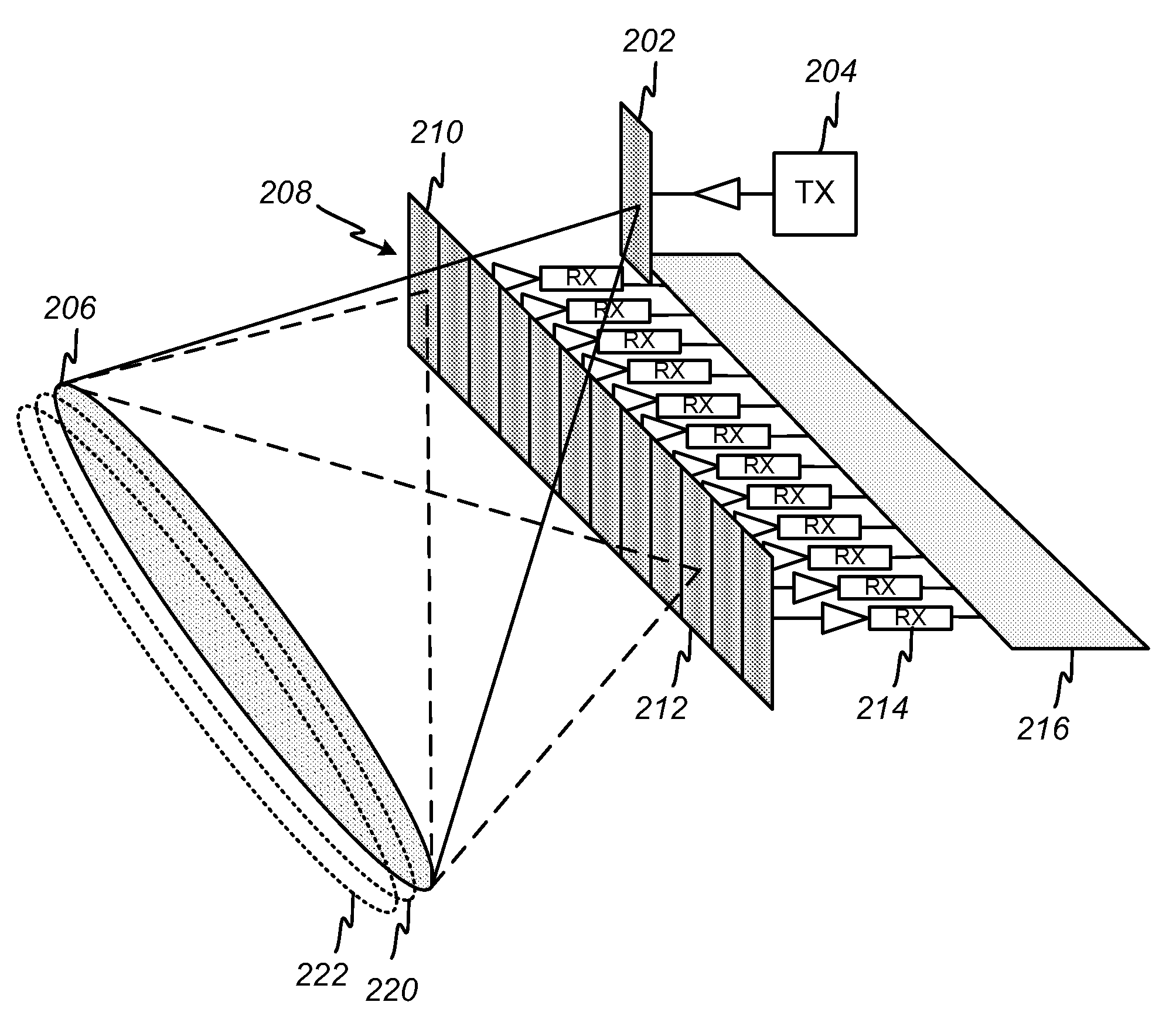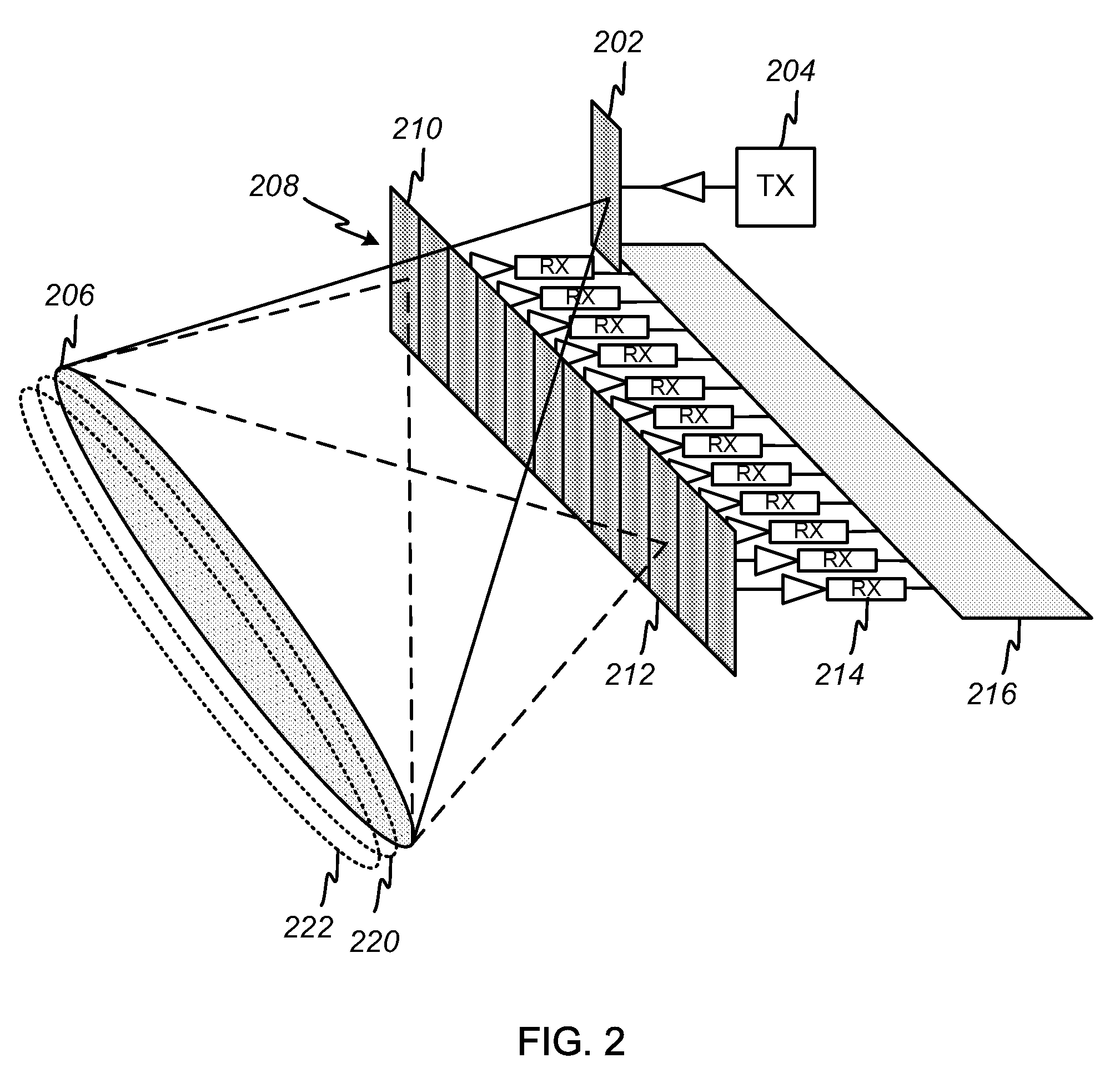Apparatus and method for radar imaging by measuring spatial frequency components
a technology of spatial frequency components and radar imaging, applied in the direction of instruments, measurement devices, and antennas, can solve the problems of adding weight and complexity to the system of antenna gimbals, and the scanning process itself adding aberrations, so as to improve the signal-to-noise ratio, eliminate time skew, and high degree of flexibility in spatial frequency-domain filtering
- Summary
- Abstract
- Description
- Claims
- Application Information
AI Technical Summary
Benefits of technology
Problems solved by technology
Method used
Image
Examples
Embodiment Construction
[0024]The invention provides a radar imaging system that directly measures the spatial frequency components of a scene via digital-beam-forming techniques applied along the cross-track dimension. Range gating is used in the along-track dimension to divide the return from an illuminated swath into multiple range bins that may be processed independently. The system provides an improved signal-to-noise ratio and lends significant flexibility to the image formation process, improving the quality of the radar imaging.
[0025]FIG. 1 depicts a conventional forward-looking vehicle-mounted imaging radar system employing a gimbaled antenna. A vehicle 102 moves in the direction indicated at 112. An antenna 104 is mounted to the front of the vehicle 102 on gimbals 110 that allow the antenna to be moved back and forth in azimuth, as indicated at 106. The antenna 104 is used for both transmit and receive. In transmit, the antenna 104 illuminates a spot 114 on the ground ahead of and below the vehic...
PUM
 Login to View More
Login to View More Abstract
Description
Claims
Application Information
 Login to View More
Login to View More - R&D
- Intellectual Property
- Life Sciences
- Materials
- Tech Scout
- Unparalleled Data Quality
- Higher Quality Content
- 60% Fewer Hallucinations
Browse by: Latest US Patents, China's latest patents, Technical Efficacy Thesaurus, Application Domain, Technology Topic, Popular Technical Reports.
© 2025 PatSnap. All rights reserved.Legal|Privacy policy|Modern Slavery Act Transparency Statement|Sitemap|About US| Contact US: help@patsnap.com



